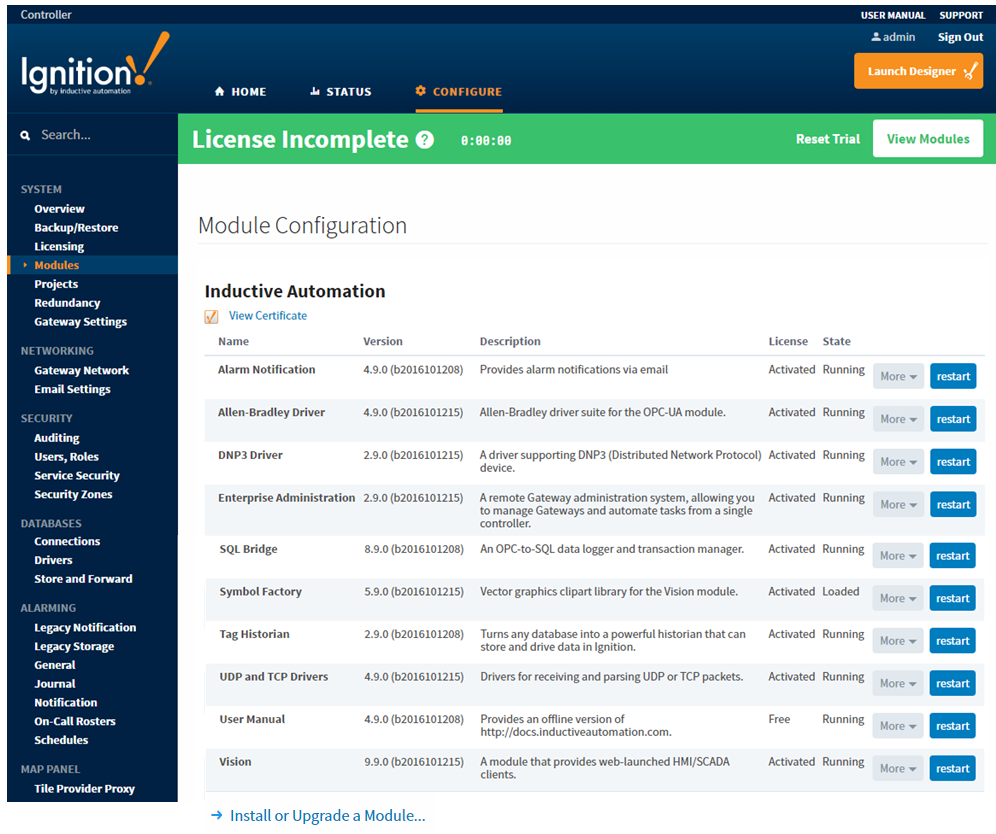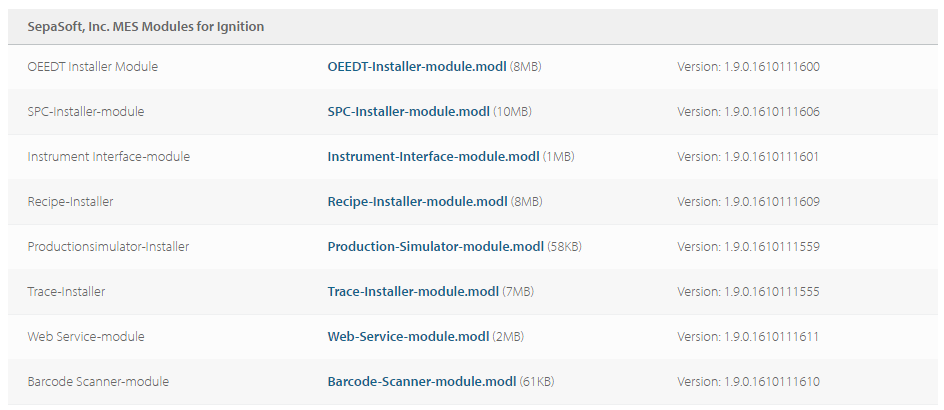Installing or Upgrading a Module
All module configuration is done from Gateway in the Configuration > Modules section. From here you can add, remove, and restart modules. Modules integrate their settings into the Gateway configuration tree, and therefore do not offer settings in this section.

To Install or Update a Module
-
On the Configuration > Modules page of the Gateway, go to the bottom on the list, find the blue arrow, and click the Install or Upgrade a Module link.
-
Click Choose File, select a .modl file that you have previously downloaded.
Don't have an Ignition module already downloaded?
Go to the Inductive Automation downloads page. Search for the module you want and save it to your Downloads folder on your computer.
Third Party Modules
All third party Ignition modules require the Ignition platform to be installed.To install third party modules:
- Install Ignition: See Installing and Upgrading Ignition
- Once Ignition is installed, download the module and install it in the Ignition Gateway: See Installing or Upgrading a Module
Note: If you are using Internet Explorer, IE changes the file extension to a '.zip' file. Rename '.zip' to '.modl' (I.e., Production Simulator-module.modl).
Go back to the Install or Upgrade Module screen and browse your Downloads folder for your module, select it, and click Open. Ignition will copy the path to the module to the Browse field and all that's left for you to do is click Install.
-
Click Install.
When the page reloads you can now see the module you installed in the list of modules.
To Uninstall a Module
-
On the Configuration > Modules page of the Gateway, go to the module you want to uninstall.
-
Under the More button, click the uninstall link on the far-right next to the module entry in the table.
Another page opens asking you to confirm. -
Click Confirm.
The module is no longer installed and is removed form the list.
Modules are hot-swappable, this means these actions can be performed while the system is running. Furthermore, the isolated nature of modules ensures that performing one of these actions only affects that particular module, and any modules which depend on it. For example, uninstalling the SQL Bridge module will not affect any running Vision module clients.
Restarting a Module
Modules can be restarted by clicking the restart button next to their entries on the Configuration > Modules page. Because of the isolated nature of modules, the other modules are not affected by the restart (unless they depend on that particular module).
Module Status
The installed module list on the Configuration > Modules page also provides some basic information about the State of the module. The Version, License, and State columns are all displayed in the list. Module licensing is performed centrally in System > Licensing, so the values here are only for information purposes.
The module State can be either Running or Loaded. Running means the module programs are actively performing tasks, for example, the Alarm Notification modules shows as Running because it is continually checking for condition changes that need to set the alarm on or off. Loaded means the module program or resources are available but nothing is running, for example, the Symbol Factory module makes all the symbol images available for your use.
Similar Topics ...